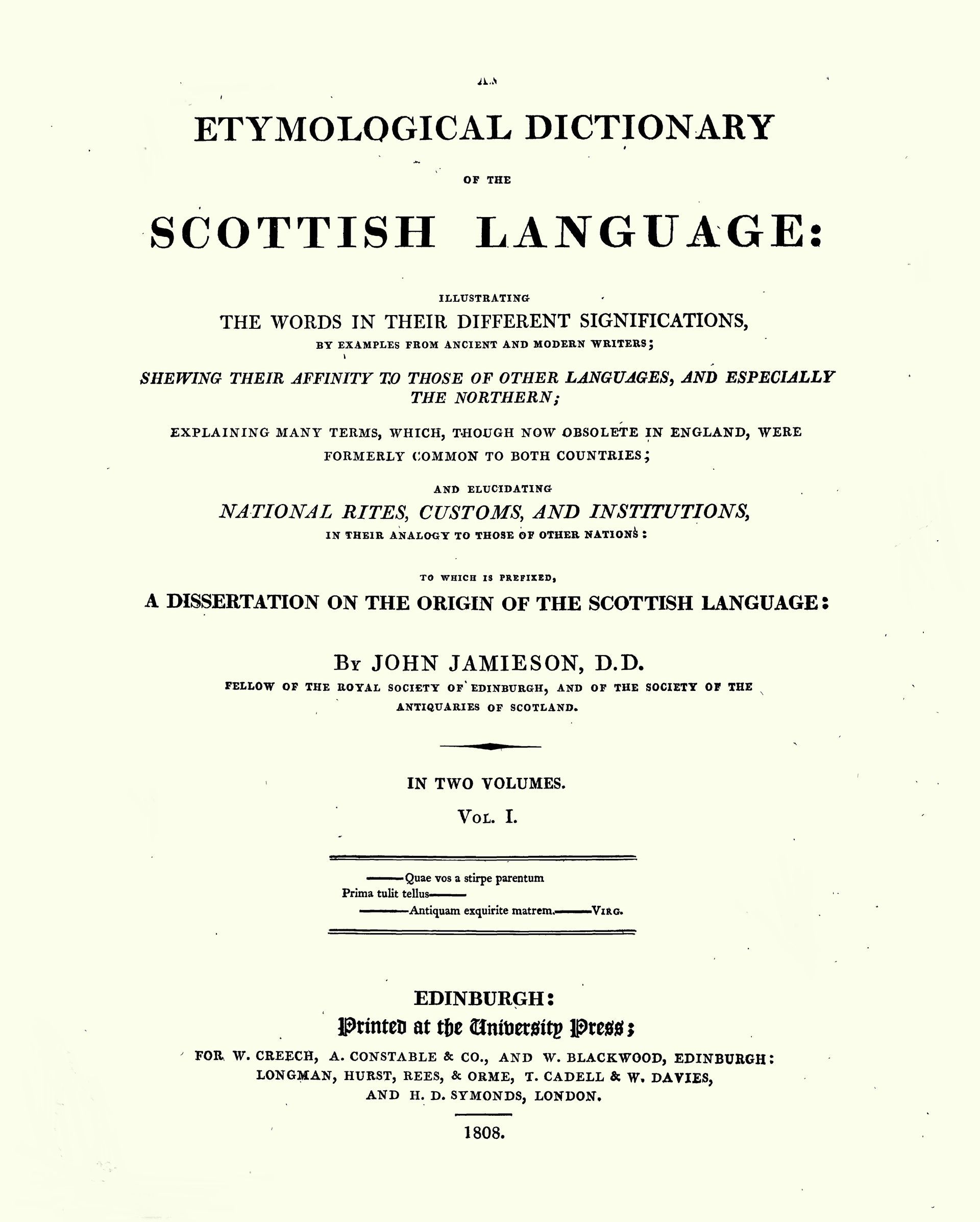Besoms, Keelies, and Merry-Men: Scott’s contributions to Jamieson’s Dictionary
Dr Susan Rennie
Thursday 14th June 2012
Summary of the Talk:
The talk explores the significant role that Sir Walter Scott played in the creation of Dr. John Jamieson’s Etymological Dictionary of the Scottish Language and its 1825 Supplement. The talk highlights the intricate collaboration between Jamieson, a minister and lexicographer, and Scott, who was not only a poet but also a key editor and contributor to the Dictionary.
Key Points:
- Jamieson’s Dictionary Project: Jamieson began the work in 1787 and spent over 20 years compiling the first comprehensive dictionary of the Scots language. His approach was innovative, laying the groundwork for historical lexicography, emphasizing tracing words back to their earliest forms and citing a wide range of sources, including manuscripts, newspapers, and living authors.
- Scott’s Contributions: While Scott is best known for his literary work, his involvement with the Dictionary was also lexicographical. As well as contributing words and examples from his own works (including Waverley and The Lay of the Last Minstrel), he provided bibliographic support to Jamieson, offering copies of rare texts and helping him to find subscribers.
- Collaboration: The relationship between Jamieson and Scott began in 1795, when they met as fellow antiquarians. Scott supported Jamieson by purchasing parts of his coin collection and introducing him to other literary figures who would contribute to the Dictionary. Over the years, Scott lent books from his personal library and provided copies of rare texts like Sir Eger, which Jamieson used in his work.
- Scott’s Editorial Influence: Scott’s impact was also felt in his editorial contributions. His annotations on Jamieson’s text, noted in his copy of the Dictionary, offered suggestions for new words and clarified definitions. For example, Scott helped refine the definition of "keelie" (a term for a young hawk or rough city youth), and made important revisions to words like "besom" (a derogatory term for a woman).
- Scott’s Literary Influence: Jamieson quoted extensively from Scott's literary works, including from The Minstrelsy of the Scottish Border - a work to which Jamieson had also contributed. These texts provided valuable examples of Scots words and usages, many of which had not appeared before in printed sources.
- The Role of the Waverley Novels: After the publication of the Waverley novels, Jamieson had a wealth of new material from Scott’s works to draw upon. These enriched his Supplement with contemporary examples of Scots terms and expressions, for example Scott’s description of the game Hy-jinks from Guy Mannering which is quoted verbatim in the Supplement.
Interesting Points:
- Scott’s Manuscript Annotations: The talk details Scott’s personal annotations in his copy of the 1808 Dictionary, which includes over 80 notes in Scott's hand, suggesting new terms to include or providing more accurate definitions. Many of these annotations were included in the 1825 Supplement, although they are not always credited specifically to Scott.
- Friendship and Mutual Respect: The friendship between Jamieson and Scott was not just professional but also personal. Scott's support was essential for Jamieson’s work, and their correspondence reveals a mutual respect and affection that lasted for decades.
In summary, Rennie’s talk sheds light on how Sir Walter Scott, through both his literary works and personal contributions, played an essential role in the creation and evolution of Jamieson’s Dictionary, blending literary artistry with linguistic scholarship.
Download the [transcript]

Download the [transcript]


